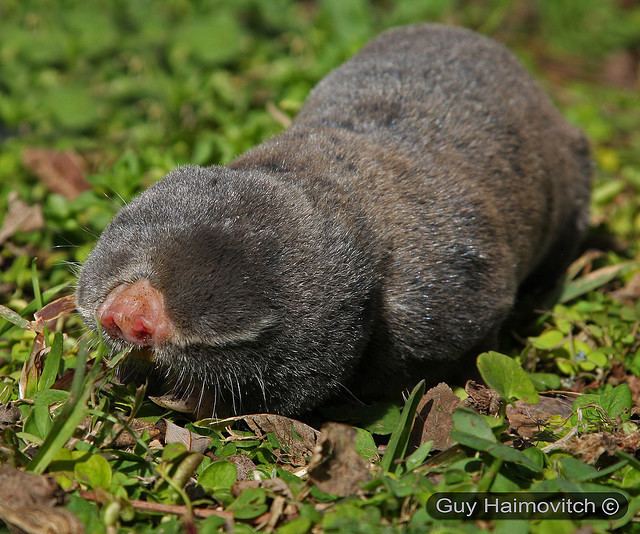Higher classification Spalax | Phylum Chordata Scientific name Spalax ehrenbergi Rank Species | |
 | ||
Similar Spalax, Rodent, Spalacidae, Mammal, Lesser mole‑rat | ||
Spalax middle east blind mole rat going wild
The Middle East blind mole-rat or Palestine mole-rat (Spalax ehrenbergi) (also known as Nannospalax ehrenbergi) is a species of rodent in the family Spalacidae.
Contents
- Spalax middle east blind mole rat going wild
- Description
- Distribution and habitat
- Possible cryptospecies
- Use in research
- References
Description
The Middle East blind mole-rat weighs 100–200 grams (3.5–7.1 oz). It has light gray fur and four sharp teeth, two large teeth in the upper jaw and two smaller teeth in the lower jaw. It has a life span of up to 20 years and is notable for its adaptability to severe lack of oxygen. In Israel, the blind mole-rat is a major agricultural pest. It digs long tunnels up to 80 centimeters deep and stores onions and tubers in underground chambers.
Distribution and habitat
Spalax ehrenbergi is found in Egypt, Iraq, Israel, Jordan, Lebanon, Libya, Syria and Turkey. The natural habitat of the mole is Mediterranean-type shrubbish vegetation, and it is threatened by habitat loss.
Possible cryptospecies
Recent cytogenetic studies have shown S. ehrenbergi in Israel may actually be a super-species group containing several cryptic species with chromosome numbers 2n=52, 2n=54, 2n=58 and 2n=60. The fact that close to the 'border line' of the niech of each sub-species there is mating between individuals from different sub-species/different 2n chromosome number, and birth of fertile offsprings indicates that at best the speciation process of the sub-species into real species has not been completed.
Use in research
According to Israeli researchers at Haifa University, the Middle East blind mole-rat is the ultimate lab animal for researching cancer due to its extraordinary resistance to the disease. In their publication [Manov et al., BMC Biology, 2013][4][1] interesting data on Spalax resistance to cancer have been documented:
-No spontaneous tumors have ever been noticed in blind mole rat, based on observing thousands of individuals along half a century.
-Inducing cancer with chemical carcinogens that lead to 100% of the expected tumors in mice and rats after 2–6 months, respectively, indicate an extraordinary cancer resistance of Spalax: Only 2 out of 12 animals, and old ones (>10 years old; Spalax can live ~>20 years; 5 times longer than its evolutionary relative, the rat) developed the expected tumor with one of the carcinogens and only after 18 and 30 months.
- Most intriguing, Spalax cells (fibroblasts), and only Spalax cells, when grown in co-culture with cancer cells from different species, including a wide range of human cancer cells, kill the cancer cells. This is also true when "feeding" the cancer cells with the medium that Spalax cells grew in. Identification of the secreted substance/s by Spalax fibroblasts and the component on cancer cells' membrane they interact with, that lead to the cancer cells' death can open a possibility for finding a general cure to cancer.
see here: http://evolution.haifa.ac.il/index.php/29-people/personal-websites/77-personal-site-avivi
